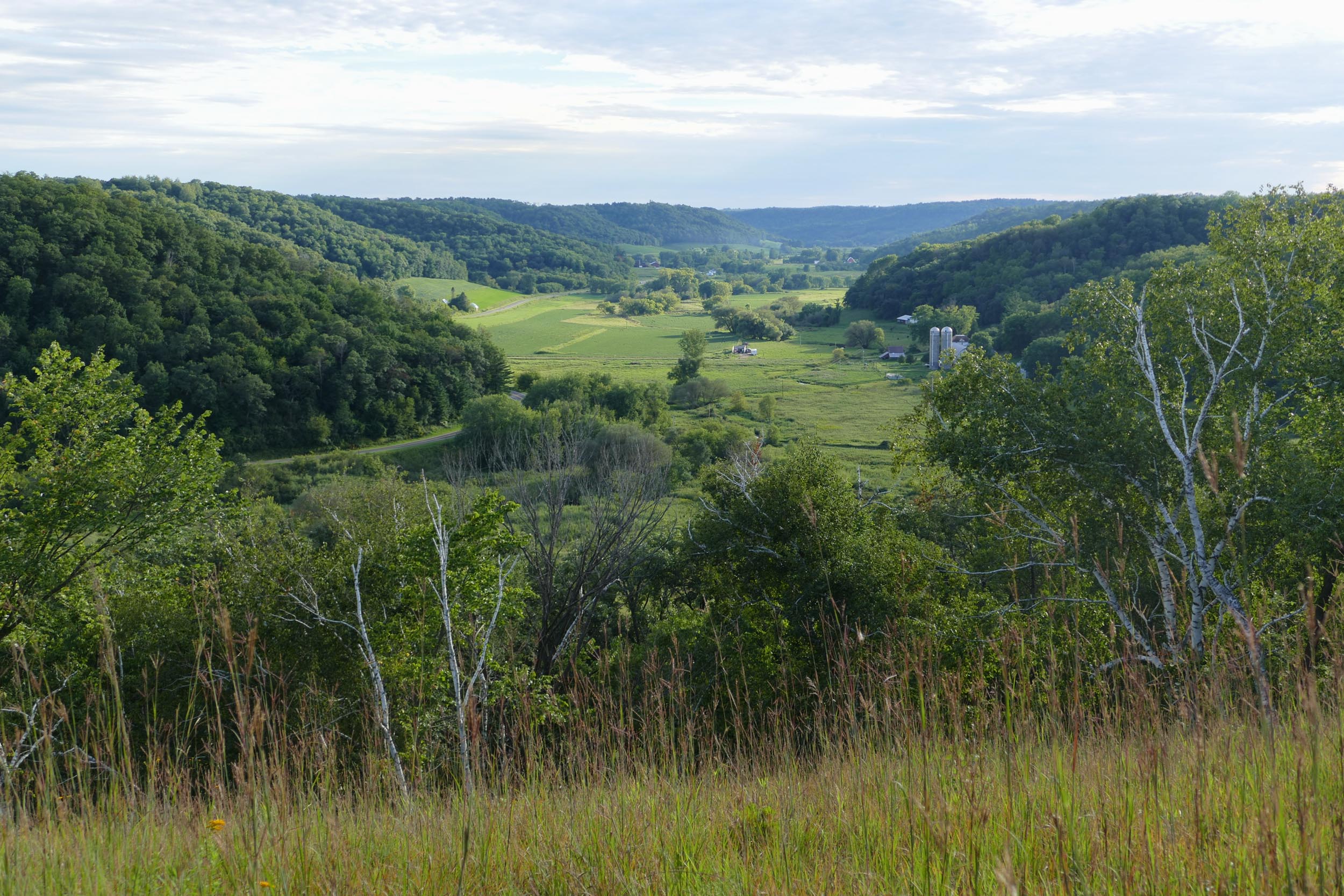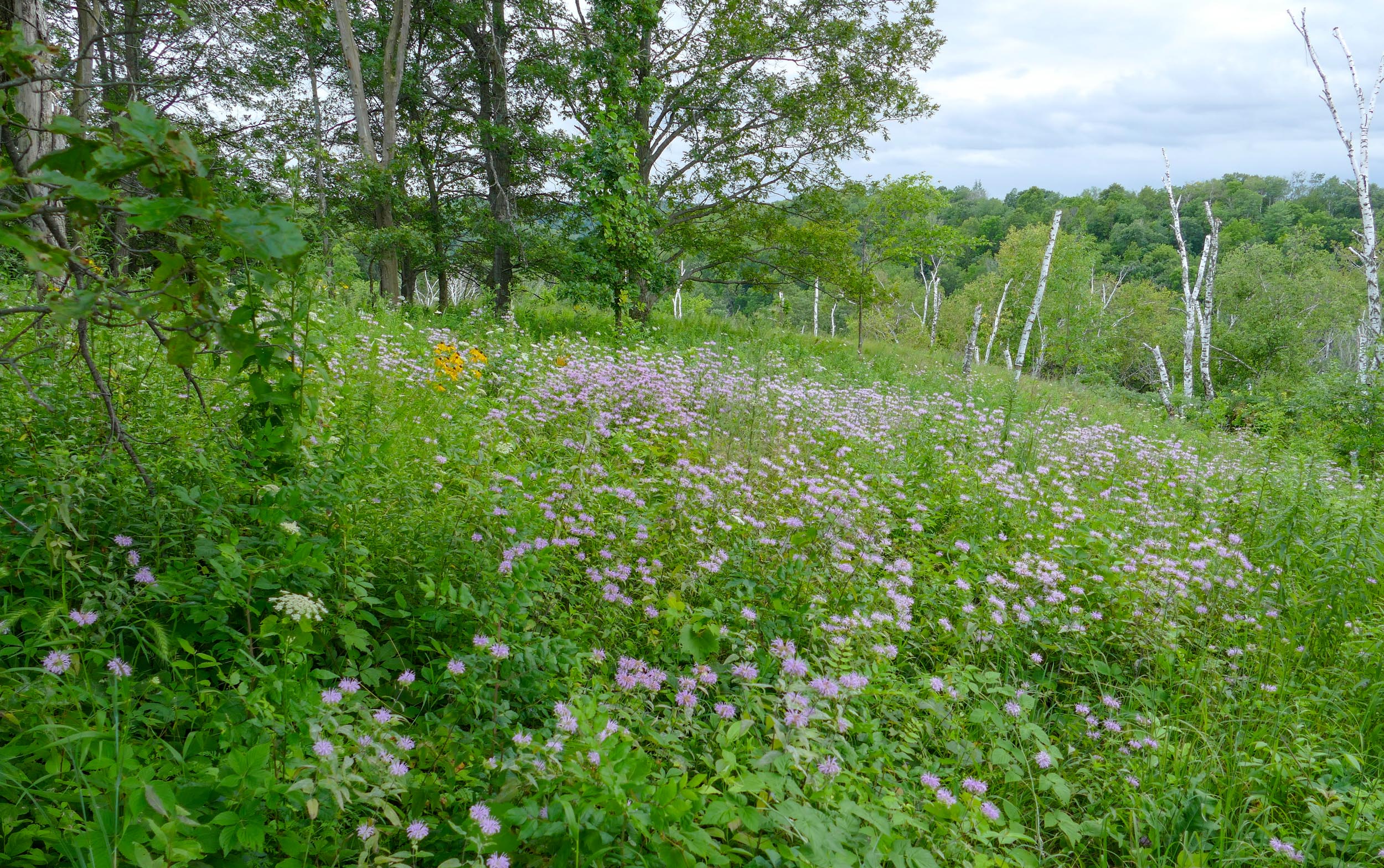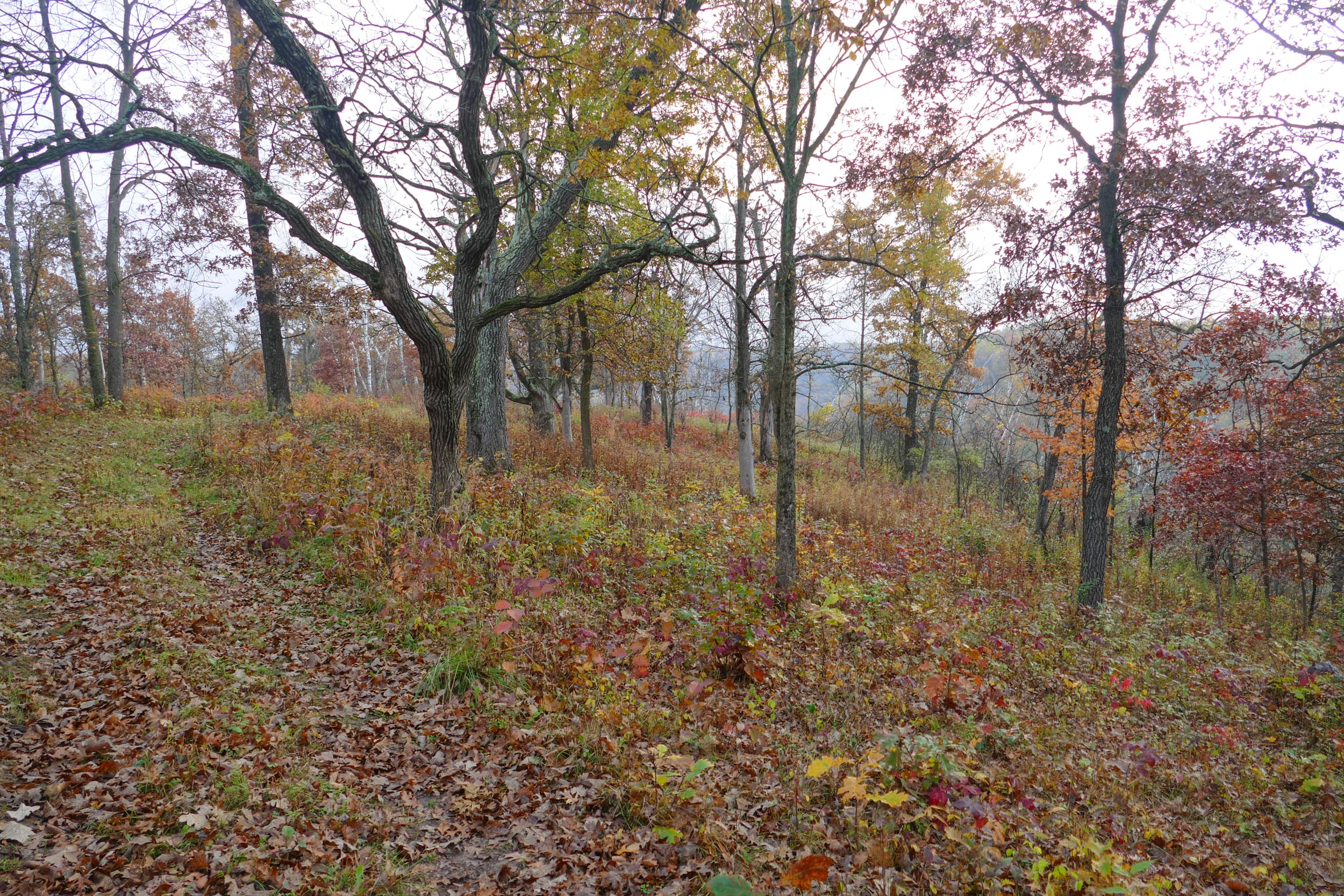What:
Our goal is to restore our land – an old dairy farm – back to the prairie and savanna that was here before the land was settled.
Why:
When we first started our project, we thought it would be a fun and interesting project to try. It’s been a huge amount of work, and will take much longer than we ever thought it would. But it has continued to be fun and interesting. As we’ve gotten farther into the project, we’ve also found more reasons we think it’s important and why we want to keep working on it.
The restoration we’ve done has made the land much more beautiful to look at – there are more flowers, more birds and butterflies, more animals and insects and fungi. The diverse habitats give the land texture and different kinds of spaces to walk through. Plants and animals have different habitat preferences, so we see different creatures, and different plants, in different places.
 We’re constantly learning. As the restoration matures, we see more animals and plants we’ve never seen. We learn about the new ones, and have a chance to observe and learn more about more familiar ones. As we experiment with ways to restore and maintain habitat, we learn more about which techniques work best for us, and how to use them to produce the best results.
We’re constantly learning. As the restoration matures, we see more animals and plants we’ve never seen. We learn about the new ones, and have a chance to observe and learn more about more familiar ones. As we experiment with ways to restore and maintain habitat, we learn more about which techniques work best for us, and how to use them to produce the best results.
More and more land in the U.S. is being developed all the time – wild land is being converted into roads, buildings, industrial sites, housing and farmland. It’s important to us to preserve and protect some of that land from development; partly so we can share with people how it used to look, but also so we can provide habitat for the many animals that have evolved to depend on this prairie/savanna landscape.
Where:
The Driftless Area of Wisconsin is a good place to do this kind of restoration because it still has so many remnants of the pre-settlement landscape.  The terrain here has steep hills and narrow valleys which were difficult to farm. As a result, much of the land has never been plowed, and much of it is still undeveloped.
The terrain here has steep hills and narrow valleys which were difficult to farm. As a result, much of the land has never been plowed, and much of it is still undeveloped.
Almost all of the land around us is owned by non-resident hunters. There are also small farms, creeks with large wetlands around them, and steep wooded hillsides. As a result there are still wild corridors that animals can use to move between different habitat areas.
The remnants give us a sense of the way the earlier landscape must have looked, and which plants and animals used to live here. The remnants also provide us with good starting points for our restorations.
How:
When we start a restoration, we pick an area that’s in pretty good shape already and work outward from there. We look for the places that have been least disturbed and have the most natives – and work toward areas that aren’t in such good shape. This method means that it’s fairly easy to make the good areas look better, and it gives the natives a better chance to thrive and then spread into the surrounding areas.
We’re continually monitoring and rechecking all our projects. That’s because once we’ve restored an area, we have to go back in subsequent years to check for invasives we missed, or new ones that have come in.
 We’ve learned that it helps to work on places we see often. We have trails through our property, and we take a long walk on them nearly every afternoon. We concentrate our efforts on places we see on this walk. It makes it easy to check on our progress, and it’s rewarding to watch the changes that happen because of our efforts.
We’ve learned that it helps to work on places we see often. We have trails through our property, and we take a long walk on them nearly every afternoon. We concentrate our efforts on places we see on this walk. It makes it easy to check on our progress, and it’s rewarding to watch the changes that happen because of our efforts.
We’re very careful about using fire. Fire was probably a big part of the original prairie ecosystem but now it can be destructive unless it’s used very carefully. This is primarily because prairies now are so small and isolated. We do burn once in a while, but we try to manage without fire as much as we can.
We try to manage in ways that vary the treatment that each area gets. Patchy management seems to be a good strategy to provide the most variation in habitats. We try to only do things when they’re needed, and in as small an area as possible. We mow, cut and treat, or spray, but only when and where it’s needed to get rid of invaders.
We try to leave places a little messy, so that there are places for animals to hide, and lots of different things for animals to eat. We leave brush piles, standing and fallen dead trees, and some weedy natives to give the habitats more variety.
 When we first started, we thought that we could make ‘perfect’ prairies. We envisioned prairies with beautiful flowers, all natives and no weeds. We’ve gradually realized that we’ll never have perfect prairies – there will always be weeds and invaders. The prairies will change over time, and it may be that we’ll have to change our methods to meet future problems. So now our goal is habitat – as much habitat, and for as many native animals, as possible.
When we first started, we thought that we could make ‘perfect’ prairies. We envisioned prairies with beautiful flowers, all natives and no weeds. We’ve gradually realized that we’ll never have perfect prairies – there will always be weeds and invaders. The prairies will change over time, and it may be that we’ll have to change our methods to meet future problems. So now our goal is habitat – as much habitat, and for as many native animals, as possible.
It’s important to us to share what we’re doing with other people. We maintain this blog to record our projects and observations; we give numerous talks and presentations about our restoration project, and we produce an annual slide show of things we’ve seen and done throughout the year. We hope these efforts will inspire others to appreciate the wildlife around them, plant native plants, protect native habitat, and perhaps try restorations of their own.
Inspiration:
We’ve gotten inspiration from books and articles, internet sites, conversations, and from experimenting with and observing the effects of our work on our landscape. Here’s a list of some of the resources that have been the most helpful or inspiring.
Books:
Bringing Nature Home: How You Can Sustain Wildlife with Native Plants – by Douglas Tallamy
Noah’s Garden: Restoring the Ecology of Our Own Backyards – by Sarah Stein
Bringing Back the Bush – by Joan Bradley
Nature’s Best Hope – by Douglas Tallamy
Groups and Organizations:
Endangered Resources Program – Wisconsin DNR
Buffalo County DNR, NRCS
The Prairie Enthusiasts
Buffalo County Bluff Prairie Restoration Group
Web Sites and Blogs:
The Prairie Ecologist – Chris Helzer
Bugguide
Wisconsin Butterflies – Mike Reese
BugTracks – Charley Eiseman
University of Wisconsin Herbarium
Minnesota Wildflowers

